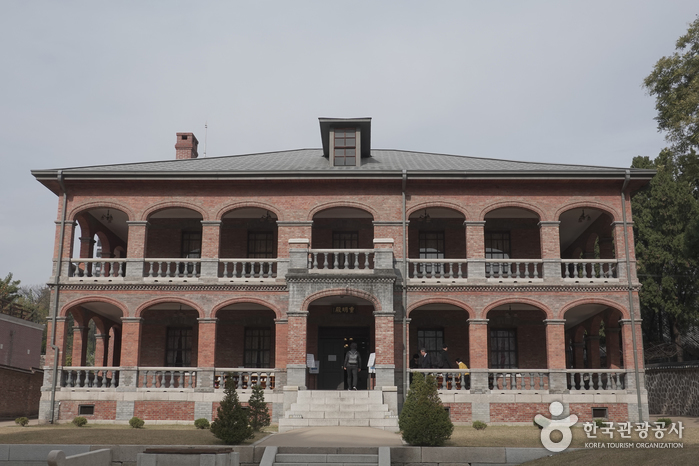Discover the Historic Jungmyeongjeon Hall
Welcome to Jungmyeongjeon Hall, a fascinating historic tourist destination located near the renowned Jeongdong Theater. As you stroll along the stonewall of Deoksugung Palace, you’ll come across this three-story western-style building that has witnessed significant moments in South Korea’s history. Designed by the talented Russian architect Seredin Sabatin, Jungmyeongjeon Hall served as the imperial library from 1897 to 1901, initially known as Suokheon.
A Witness to History
Prepare to step into a place that once housed the main office of Emperor Gojong during a critical period of national affairs and engagements with foreign dignitaries. It was within these walls that important discussions took place and historic events unfolded. Unfortunately, Jungmyeongjeon Hall was also the site where the infamous Eulsa Treaty, also known as the Japan-Korea Protectorate Treaty, was signed. This tragic part of history adds to the significance of this remarkable building.
An Architectural Marvel
Jungmyeongjeon Hall, formerly part of Deoksugung Palace, is now separated from the palace by a stone wall. While it once showcased one of the modern architectural styles in Korea, the original interior structure was lost in a fire that occurred in 1925. Despite this setback, the exterior of the building remains intact, allowing visitors to appreciate its grandeur and historical value.
A Cultural Heritage Site
Since its liberation from Japanese occupation on August 15, 1945, Jungmyeongjeon Hall has served various purposes. In September 2006, the Cultural Heritage Administration took ownership of this cherished hall. It was then designated as part of Deoksugung Palace and officially classified as Historic Site No.124 in February 2007. This recognition highlights the importance of preserving this significant piece of South Korea’s cultural heritage.
Getting There
- Subway: If you’re traveling via the Seoul Subway, you can reach Jungmyeongjeon Hall by taking Line 5 and getting off at Seodaemun Station, Exit 5. From there, it’s just a short walk behind Jeongdong Theater.
- City Hall Station: Another option is to take Line 1 or 2 to City Hall Station. From Exit 1 or 12, you can easily reach Jungmyeongjeon Hall on foot.
Make sure to include Jungmyeongjeon Hall on your itinerary and immerse yourself in the rich history and culture it encapsulates. With its significant role in South Korea’s past and its architectural beauty, this historic destination promises a truly captivating experience.

